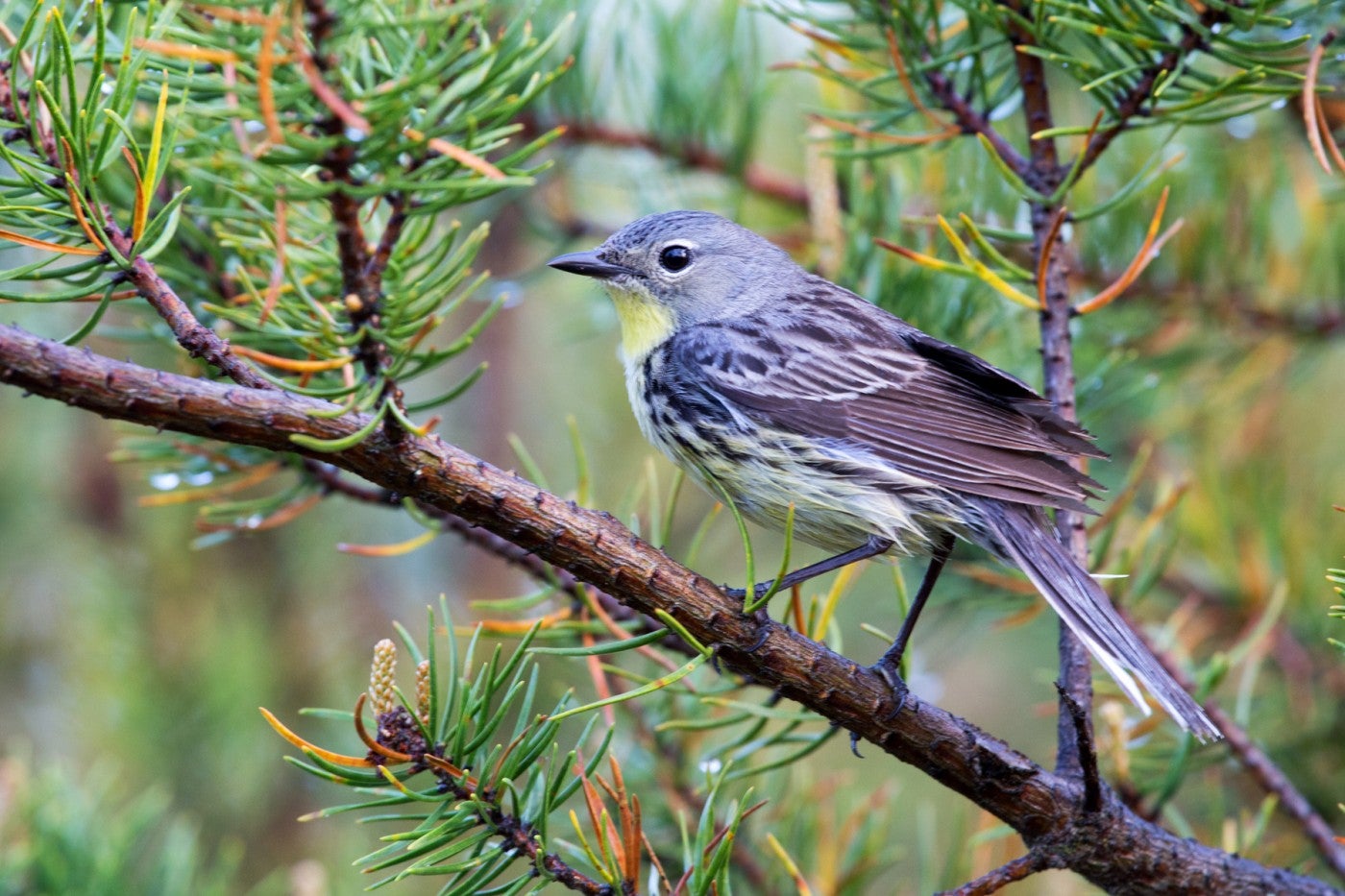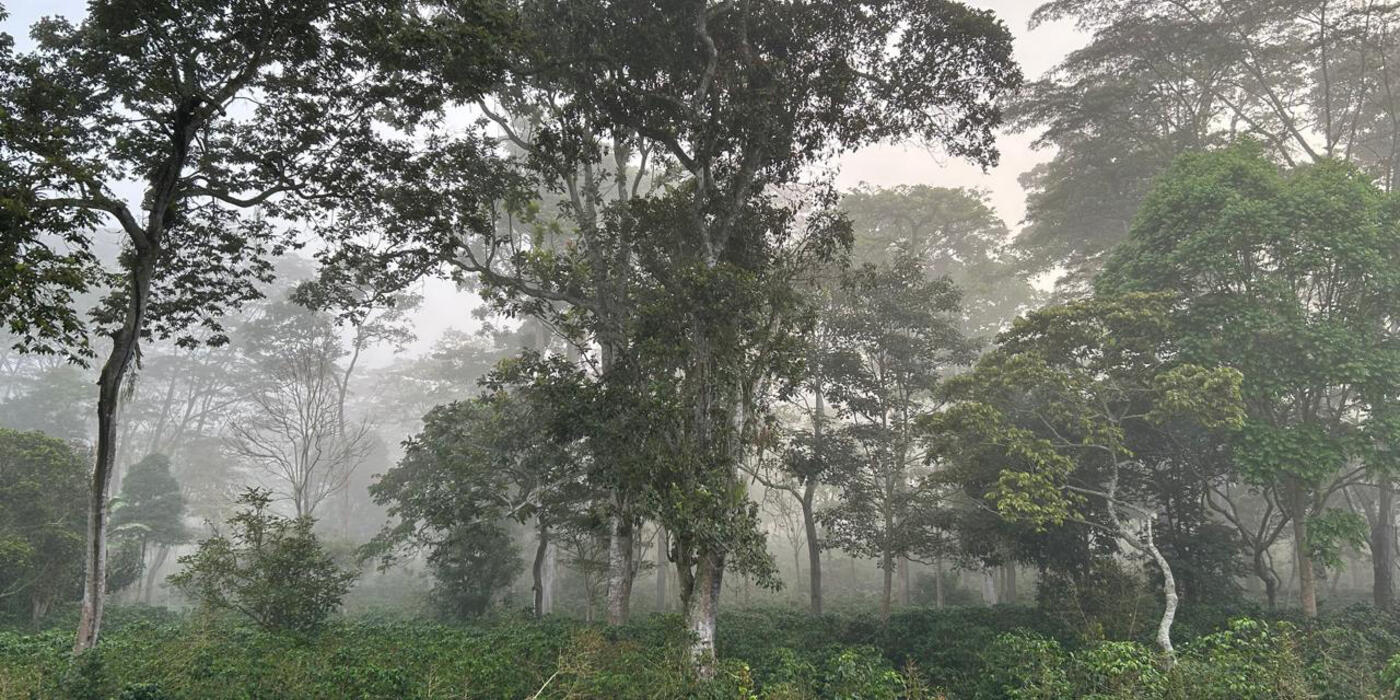A Day in the Life of a Conservation Biologist in Search of a Rare Songbird’s Nest
Kirtland’s warblers are one of North America’s rarest songbirds. They winter in the Bahamas but breed almost exclusively in Michigan, where Smithsonian Migratory Bird Center scientists have studied them since 2006. Kirtland’s warblers were once a common target of brown-headed cowbirds, who would lay their eggs in warbler nests — causing parents to care for cowbird chicks instead of their own. For many years, Michigan’s cowbirds were trapped and killed to protect warblers. However, a study by SMBC research ecologist Nathan Cooper found that warblers no longer need this extra protection, and in 2018, the cowbird traps were removed. Cooper and his team still monitor warbler nests to ensure successful breeding. Intern Haley Haradon joined the research team for the 2021 season. In these excerpts from his field journal, Haradon transports you to Michigan’s young jack pine forests as he searches for Kirtland’s warbler nests.
June 28, 2021 | Huron National Forest, Michigan, U.S.
She has been staring me down with an insect-laden bill for nearly a minute, making noisy alarm calls. Her partner in crime gives an occasional “chip,” his mouth agape with caterpillars to the point of hilarity. I have been searching the forest for Kirtland’s warblers for a few hours now and am hopeful this pair will lead me to their nest. I lay low behind a jack pine, trying to look like a typical forest animal. The female bounces between several saplings, nervously darting her head back and forth. I try to hold perfectly still as insects consume me, caving only to quickly pull off a tick I feel crawling up my calf. Flicking it away, I sink again into stillness.

With her guard still raised, the warbler reluctantly dives down and deposits fat caterpillars into her chicks’ hungry mouths. Her partner follows suit only a moment later, and I carefully memorize the shape of the jack pine they visited. It’s so similar to the rest that it would be easy to lose in the crowd of its likeness. I scan the treeline for the wandering eyes of predators. Though I see none, I pretend to check several fake nests as I cautiously approach the base of the jack pine. This should confuse any clever cowbirds, blue jays or crows — all nest parasites or predators that may be trying to follow my movements to the real nest.
Mama ain’t happy. She alarms nonstop and feigns a broken wing in a noble attempt to lead me away from her chicks. Pretending to have a broken wing is a common defense strategy birds use to draw predators away from their otherwise defenseless young. I lift my binoculars and spy into the small grassy bowl she built for her young. I count one, two, three, four bills and eight unblinking little eyes. Best of all, I can tell that none of them are cowbirds! Using my GPS, I record the coordinates of the nest and depart in a different direction. Ensuring my trail doesn’t end right at the nest will help protect the chicks from any mammalian nest predators, like mice and weasels, that might be following my scent. I have already caught three weasels red-handed following my scent trail this month.
This nest is the 50th I have found this season, and it belongs to the same pair of warblers that built the first nest I located earlier this season. The habitat has changed so much since then. Back in early May, the shallow hills were dormant. There were no vibrant leafy oaks and ferns or succulent blueberries. No eruption of insects for animals to eat, unlike the scourge of black flies I see today. No familiar “boom” sound of air rushing across the wings of a diving nighthawk. The snakes had yet to emerge from their wintry depths, and no raiding parties of blue jays patrolled the forest.

The warbler pair’s first six eggs were eaten by a predator about a month ago. They only have four chicks this time around, and I wonder if they feel rushed with the fall migration approaching. I may be the last person these warbler nestlings see for some time. They look to be about 11 days old, just a day or so from fledgling (leaving the nest) and having to make their own way in the world. In a few days, I hope I can add them to the ranks of successfully fledged nests that we keep on the wall of our field house. I extract another tick from my waistline, rolling my eyes and thinking, I guess this is what it’s like to be a nest searcher.
Part II
It’s late afternoon now, and I find myself creeping through a different part of the jack pine forest. This area has been carefully manicured into a warbler’s ideal habitat – endless rows of dense, young jack pine trees. It attracts colonies of warblers but is a nuisance to walk through. One particular warbler has been baffling me for a month, and today I hope to crack the code of its sex. Male and females look similar, but can usually be distinguished in the field. Males are bluer on the back overall and typically have black around their eyes, but females do not.
This bird has been secretive and hard to get my eyes on, but sometimes, their behavior can give them away. Males are extroverted, boisterous and often sing relentlessly. But I cannot get a scrap of definitive behavior from this bird. If I could catch it, I could check its breeding condition for clues to its sex. But for now, my only tools are time and observation.
I have come to call the mystery bird “Raspy” on account of its horrible voice. It only knows one tune: a harsh, low, coarse version of a male warbler’s song. When it is in the mood, it sings this song over and over again. It also responds to recordings of a singing female, another sign it could be a male. But most male warblers show aggression when another male enters their territory, and Raspy does not react strongly when I play the songs of a male warbler.
I have spent many hours following this bird. The longer I observe it, the more questions it raises. It does not have a nest, yet seems to spend time with a male. Neighboring males tolerate it, and it tolerates them. It seems not to stray far from its territory, but has nothing to defend. Its behavior resists categorization.
Today, what appears to be a male Kirtland's warbler follows close behind Raspy. He is more blue than gray, with more black on his face. His call is eerie and constant; it is shrill yet reminds me of the purr of a feline. I follow the pair for nearly two hours as they forage, preen and sing together. In my pursuit, I stumble upon the nest of a vesper sparrow, flushing the unsuspecting mother from her grassy, egg-filled hovel. As she alarms at me, Raspy can’t help but join in, and the male warbler soon follows.
Eventually, the pair drifts back toward the center of their territory. They seem to be living with no grand ambitions – contradictory to the behavior I would expect from birds with such a short breeding season. Raspy is a reminder that wild things work in wild ways. Storm clouds grow overhead, and cold droplets begin their assault. I hear the distant hum of a Jeep coming to pick me up and cannonball my way through the quickly soaking pines. Another day of observation has left me with more questions than answers. Sloshing down the road in the jeep, I notice an insidious tingling on the back of my neck, and palming my collar, I remove another tick. I can’t help but chuckle. I suppose this is what it’s like to be a naturalist.
Part III
Back at our field house in the sleepy town of Mio, I think about the few thousand pairs of Kirtland's warblers that roam Michigan’s successional forests. Tremendous efforts have pulled them from the brink of extinction in living memory. I often dwell on the familiar idea that over-specialization leads to extinction, and I can’t help but hope that it will be a different story for this little bird, who is so extremely specialized, breeding only in young jack pines forests. Of the many species I have come to know in my career, none is as personable and charismatic as the Kirtland’s warbler.
There are many moments from this field season I will never forget. There was the warbler mother, with more gusto than smarts, who blasted off her nest and landed on my boot. We stood together for a while in a stalemate, neither of us willing to yield. Then, there was the day my phone died and I got turned around in the monotony of the jack pines. I had to use the familiar sound of a warbler who always sang at dawn to orient myself back to the road. Another time, I witnessed a curious male warbler parading after a massasauga rattlesnake.
It’s 8 p.m. now and the sun is still out, but my alarm will go off just past 4 a.m. so I must try to sleep. As the day ends, I think of the genetic relay race it takes to keep a migratory species’ fire flickering through deep time. Soon it will be fall, and beings who opened their eyes only a few months ago will have to take to the sky and fly higher and farther than I could ever dream. My mind drifts, and I hope to myself that we will always save a small place in the world for this little warbler. As I roll over, there’s an irksome yet familiar feeling near my waistline. I pull one last tick off, musing that I guess this is the life of a conservation biologist.



